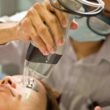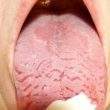The skeletal system is the main precursor of movement and stability. But this is only a small part of it major functions that is crucial to the body. Unfortunately, like the rest of the body, it is also susceptible to diseases. Here are a handful of bone-related diseases and how to possibly treat them.
Osteoporosis
By now, we must have heard of osteoporosis one way or another. Osteoporosis is a bone condition where bones become more porous and over time become weak. A loss of bone density causes the extreme porous conditions of the inner cavity of the bone.
Risk Factors: This condition is a bit of a sexist due to its higher prevalence in women than men. Smoking, Age, Menopause and other hormonal issues can increase the occurrence of osteoporosis.
Possible Treatment: Supplements of Vitamin D and Calcium can improve the bone density. However, in progressed and/or severe cases, bisphosphonates and hormone replacement therapy are recommended.
Osteogenesis Imperfecta
Bones breaking without any force applied to them seems impossible, right? But that is exactly what osteogenesis imperfecta is. It is a condition where bones are so brittle they break without or little impact. Bone growth abnormalities such as osteogenesis imperfecta are often linked to genetic inheritance from the parents. They can vary in severity and the onset of the symptoms. What is heartbreaking is that some cases are diagnosed even before the baby is born.
Risk Factors: Gene abnormality in the production of collagen inherited from either side of the family tree pose a great risk.
Possible Treatment: Most cases require a lifetime of managing the disease with braces, wheelchairs, physical therapy, customized exercise and other precautions to lessen the onset of bone breakage.
Fibrodysplasia Ossificans Progressiva
This is a rare bone condition that turns damaged soft tissues into bones. Frequent trauma and illnesses to the body causes flare-ups of FOP. As the more and more flare ups cause such bone regrowth, mobility and critical internal organs can be compromised. This condition has a hereditary links and/or mutations of the ACVR1 gene.
Risk Factors: A mutation of the ACVR1 gene is a determining factor of this condition.
Possible Treatment: Unfortunately, no known treatments can cure FOP. Managing flare-ups with bisphosphonates and corticosteroids and surgically removing bone growths are recommended but are still riddled with risks.
Rickets
Vitamin D is important as it aids in the proper absorption of calcium in the body. Depletion of this vitamin may result to a condition known as rickets. It is characterized by weak and brittle bones that easily break.
Risk Factors: Children are at high risk of rickets especially those that are not often exposed to sunlight, proper nutrition and exercise. Other medical conditions such as renal failure and some gut surgeries can cause rickets as they can cause disruption or abnormalities in the absorption of minerals and the activation of vitamin D in the body.
Possible Treatment: Depending on the severity of the case, oral or intramuscular supplementation of Vitamin D is used to replenish the depleted vitamin.












